A rabbit ear fold is a fundamental origami technique that plays a pivotal role in creating intricate and lifelike paper art.
In the world of origami, where simplicity meets complexity, the rabbit ear fold serves as a cornerstone, enabling artists to sculpt animals, flowers, masks, and various intricate structures with precision and grace.
This fold involves manipulating paper to create triangular shapes, allowing for the formation of essential features like ears, wings, and petals.
Its versatility extends from crafting lifelike animal models to delicate modular designs and mathematical explorations.
As origami enthusiasts explore the endless possibilities, the rabbit ear fold remains a cherished skill, transforming flat sheets of paper into captivating works of art.
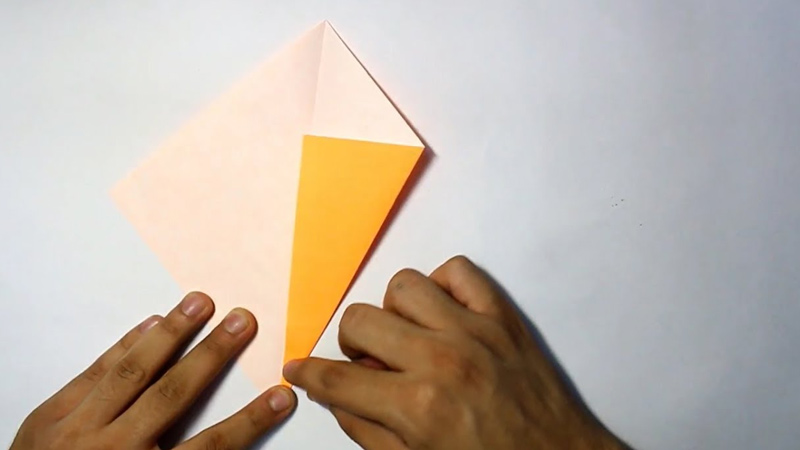
What Is a Rabbit Ear Fold in Origami?
A Rabbit Ear Fold is a fundamental origami technique used to create various shapes and structures in paper folding.
It involves folding a square sheet of paper in such a way that a portion of it resembles the long, floppy ears of a rabbit.
This fold is commonly employed in more complex origami models to create features like legs, arms, or other appendages.
Origami is an ancient Japanese art of paper folding, with roots dating back to at least the 17th century. The word “origami” comes from the Japanese words “ori” (to fold) and “kami” (paper).
Initially, it was a simple folk art form, often used for ceremonial purposes. However, over time, it evolved into a sophisticated artistic expression.
Origami’s beauty lies in its ability to transform a flat, square piece of paper into intricate three-dimensional shapes, animals, flowers, and various other objects, all without the use of scissors or glue.
It requires precision, patience, and creativity, making it a beloved art form and a symbol of the delicate balance between simplicity and complexity.
The Origin of the Term “Rabbit Ear” in Origami
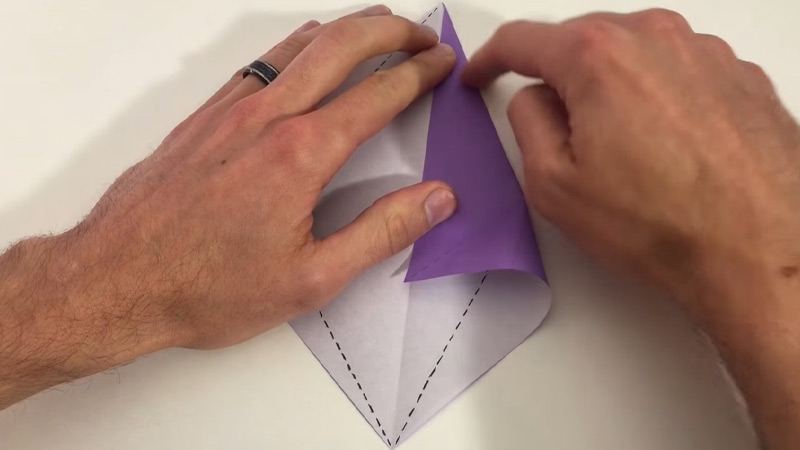
The term “Rabbit Ear” in origami refers to a specific folding technique that resembles the long ears of a rabbit when executed.
While the exact origin of the term is not well-documented, it likely emerged from the traditional Japanese practice of naming origami folds and models after recognizable objects in nature.
In Japanese, this fold is often referred to as “Usagi Mimi,” where “Usagi” means rabbit, and “Mimi” means ear.
Origami has a rich cultural history in Japan, and many folds and models have been given descriptive names inspired by animals, plants, and everyday objects.
These names not only help practitioners remember the steps but also add an artistic and whimsical dimension to the art form.
Rabbit Ear folds are a classic example of how origami combines practicality with creativity, allowing artists to visualize and replicate shapes found in the natural world using a single sheet of paper.
How to Make a Rabbit Ear Fold in Origami
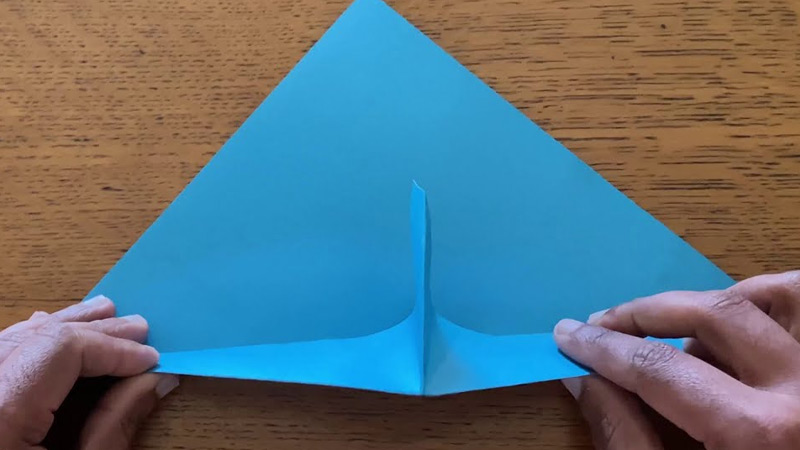
Creating a rabbit ear fold in origami is a basic and fundamental folding technique used to make various origami models.
Here’s a step-by-step guide on how to make a rabbit ear fold:
Instructions:
Start with a square sheet of origami paper
Ensure that your paper is perfectly square. If it’s not, you can make it square by folding a rectangular sheet diagonally from one corner to the opposite corner and then trimming off the excess paper. You should have a square with one folded diagonal crease.
Fold the paper in half horizontally
Take the top edge of the square and fold it down to meet the bottom edge. Make sure the two edges align perfectly, and then crease the fold firmly. This creates a horizontal crease across the paper.
Fold the paper in half vertically
Now, take the left edge of the square and fold it over to meet the right edge. Again, ensure that the edges align precisely and crease the fold firmly. This creates a vertical crease across the paper, resulting in a smaller square.
Rotate the paper
Position the paper so that it looks like a diamond shape with the folded corners at the top and bottom.
Fold the top layer of the diamond down
Take the top point of the diamond and fold it down towards the center of the diamond. This action will create a smaller diamond shape on top.
Fold the bottom layer of the diamond up
Take the bottom point of the diamond and fold it up towards the center of the diamond, aligning it with the top fold. As you do this, the paper should start to resemble a kite shape.
Open up the top layer
Carefully lift the top layer of the folded paper. This action will create a flap on top of the kite-shaped structure.
Flatten the flap into a triangle
Take the flap that you just created and fold it down so that it lies flat on top of the rest of the paper. This fold forms a triangle shape at the top of the kite.
Repeat the process on the other side
Turn the paper over, and you should see a similar kite shape on the reverse side. Perform the same series of folds on this side to create another rabbit ear fold. This step ensures that both sides of your paper have the same structure.
Adjust the angles and creases
Take a moment to adjust the angles and creases on your rabbit ear folds. Make sure everything is neat and symmetrical. Your rabbit ear fold is complete and can be used as a building block for various origami designs.
Famous Origami Models Featuring Rabbit Ear Folds
Rabbit ear folds are a fundamental origami technique used in a wide variety of models, from simple to complex.
While not all origami models featuring rabbit ear folds are famous, here are some well-known origami models that incorporate this folding technique:
Crane (Tsuru)
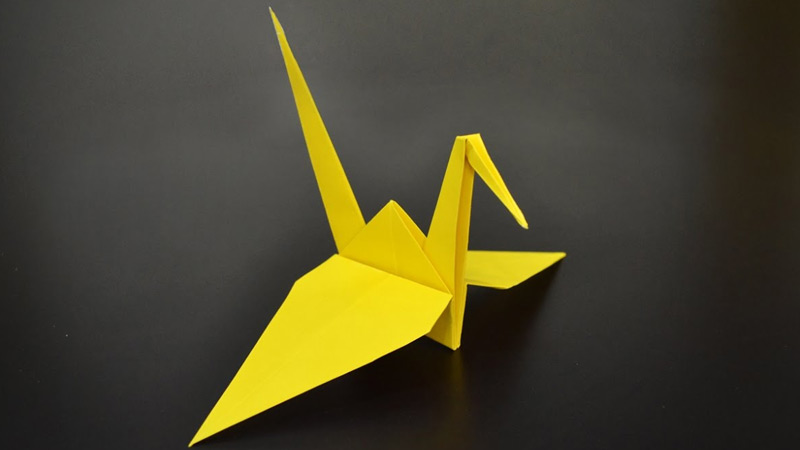
The origami crane is one of the most iconic and widely recognized origami models. It uses rabbit ear folds in the early stages of folding to create the bird’s neck and tail.
Butterfly

The origami butterfly is another popular model that often uses rabbit ear folds to create its wings. There are various butterfly designs, and many of them involve these folds.
Frog (Jumping Frog)
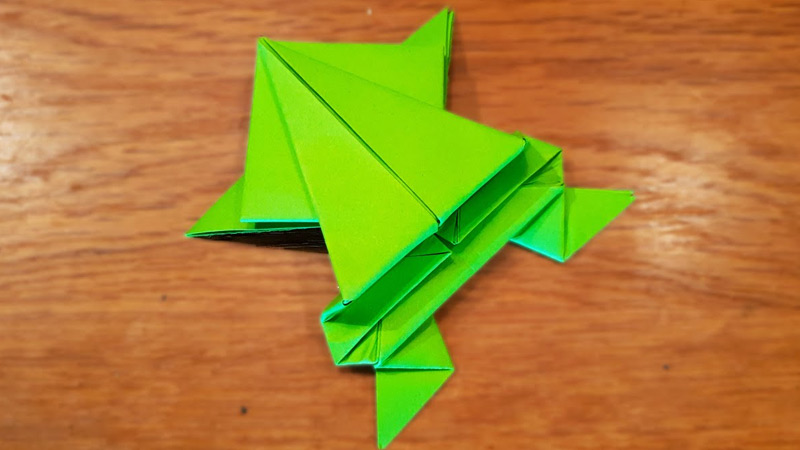
The origami frog, especially the jumping frog, uses rabbit ear folds to create its legs. When you press down on the frog’s back, it “jumps” into the air, making it a fun and interactive model.
Fox Mask
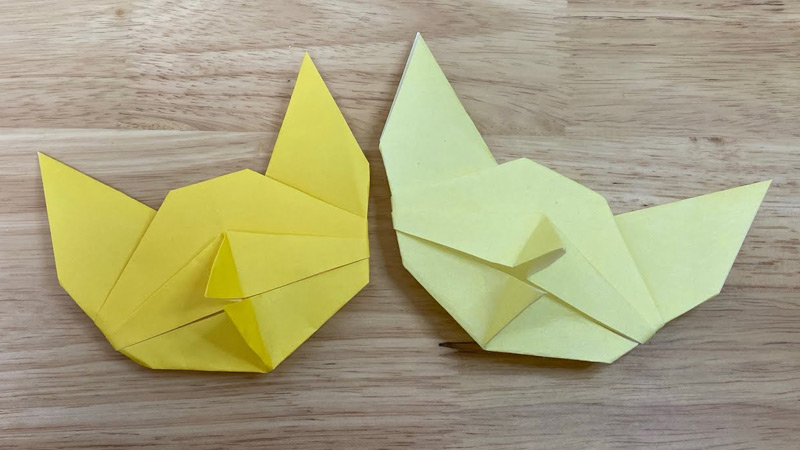
Origami masks, including the fox mask, use rabbit ear folds to create the intricate features of the mask. These models are often used in traditional Japanese ceremonies and performances.
Swan
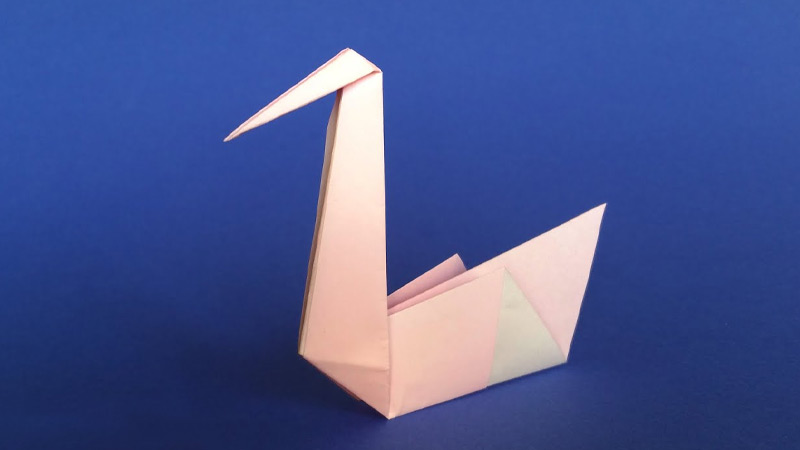
The origami swan is an elegant and graceful model that incorporates rabbit ear folds to shape its long neck and wings. It’s a symbol of love and fidelity in many cultures.
Origami Crane Mobile
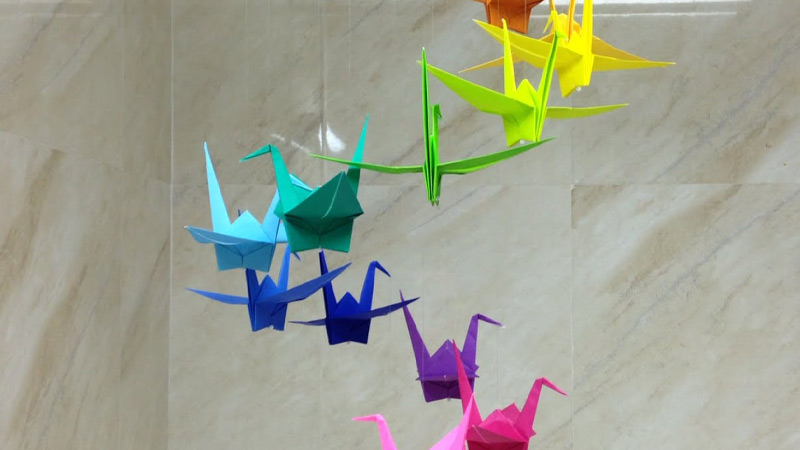
Mobiles made of multiple origami cranes are a beautiful and popular decorative item. Each crane typically includes rabbit ear folds for its neck and tail. When assembled into a mobile, they create a stunning display.
Origami Flowers
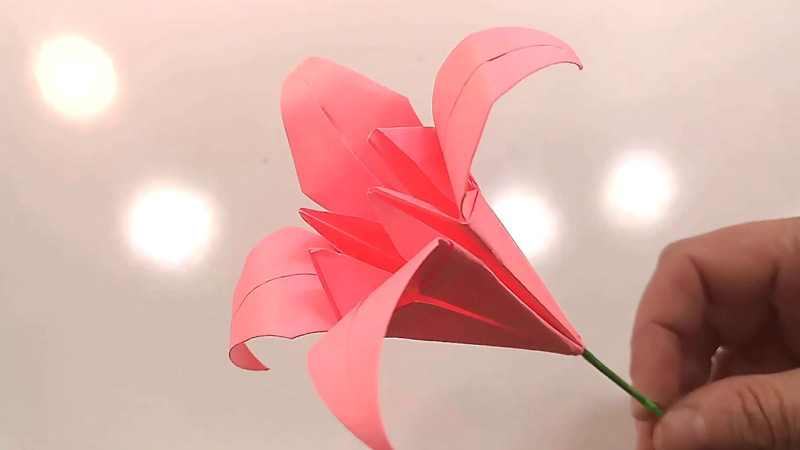
Many origami flowers, such as the traditional lily, involve rabbit ear folds to shape the petals. These flowers can be used for decoration or as part of larger origami arrangements.
Origami Boxes
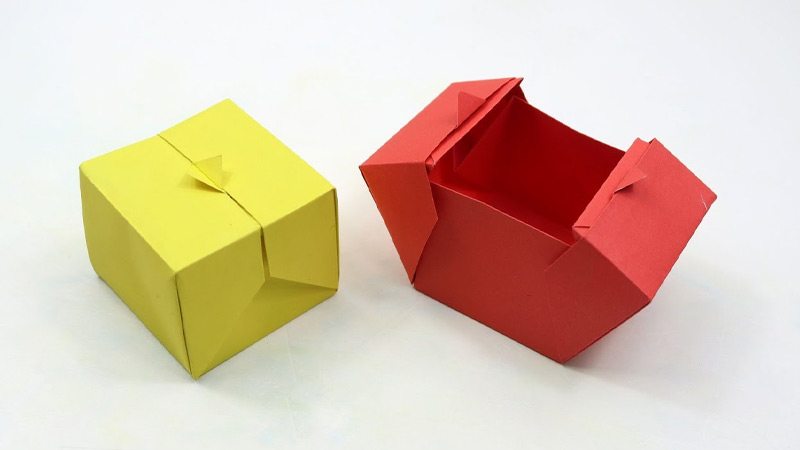
Various origami boxes and containers use rabbit ear folds to create the flaps and closures. These boxes are not only functional but also serve as stylish gift containers.
Origami Birds in Flight
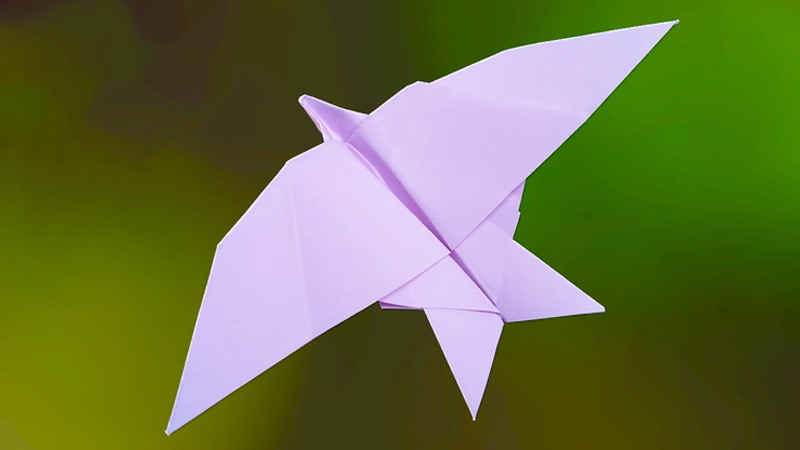
Some advanced origami models depict birds in mid-flight, and they often utilize rabbit ear folds to create intricate wing and tail feathers. These models can be quite intricate and visually striking.
Origami Animals
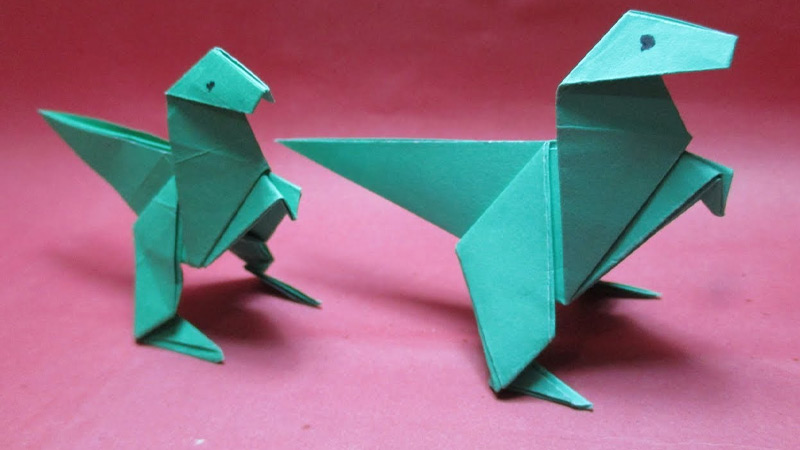
Besides the frog mentioned earlier, many other origami animals, such as rabbits, dogs, and cats, use rabbit ear folds to shape their features, including ears, tails, and legs.
Applications of Rabbit Ear Folds in Origami
Rabbit ear folds are a fundamental origami technique with a wide range of applications in creating various origami models.
Here are some common applications of rabbit ear folds in origami:
Animal Models
Rabbit ear folds are frequently used to create the ears, tails, and limbs of origami animals such as rabbits, dogs, cats, and elephants. They allow for the shaping of animal features in a realistic and charming manner.
Bird Models
Bird origami, including cranes, swans, and owls, often use rabbit ear folds to form the wings, tails, and beaks. These folds contribute to the lifelike appearance of the birds.
Flower Models
In origami flowers like lilies, roses, and orchids, rabbit ear folds are employed to shape the petals. These folds help create the elegant and intricate details of the blossoms.
Origami Masks
Rabbit ear folds are essential in the creation of origami masks. They allow for the formation of facial features like eyes, noses, and mouths, adding character and expression to the masks.
Modular Origami
Rabbit ear folds are crucial in modular origami, where multiple units are folded and assembled to create intricate geometric shapes, polyhedra, and decorative objects. These folds often join units together securely.
Origami Boxes and Containers
Rabbit ear folds are used in the creation of flaps and closures in origami boxes and containers. These folds ensure that the containers can hold objects securely.
Origami Art and Decor
Rabbit ear folds are employed in artistic origami compositions, where they help create unique patterns, textures, and shapes. These compositions can be framed or displayed as standalone art pieces.
Origami Mobiles
When creating origami mobiles, rabbit ear folds are used to create the wings, tails, and appendages of hanging origami models. These folds contribute to the overall balance and aesthetics of the mobile.
Origami Jewelry
Rabbit ear folds can be used to create intricate origami jewelry pieces, such as earrings, pendants, and brooches. They allow for the shaping of delicate and detailed designs.
Origami Sculptures
In large-scale origami sculptures, rabbit ear folds play a critical role in shaping various parts of the sculpture, including limbs, appendages, and facial features. These sculptures can be both visually stunning and technically challenging.
Educational and Mathematical Origami
Rabbit ear folds are valuable in educational origami and mathematical origami, where they illustrate geometric principles and mathematical concepts like angles, symmetry, and tessellation.
Tips for Mastering Rabbit Ear Fold Origami
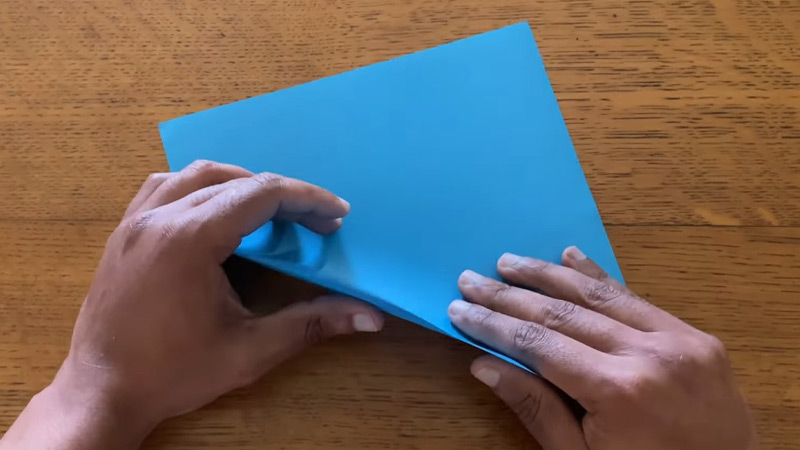
Mastering the rabbit ear fold in origami can take some practice, but with dedication and the right approach, you can improve your skills.
Here are some tips to help you become proficient in creating clean and precise rabbit ear folds:
Start with the Basics
If you’re new to origami, begin with simple models that incorporate rabbit ear folds, such as frogs or simple birds. As you gain confidence, move on to more complex designs.
Use High-Quality Origami Paper
Invest in good-quality origami paper. It’s easier to fold and holds creases better than standard printer paper. Origami paper is available in various sizes and colors to suit your preferences.
Practice Folding Precisely
Accuracy is crucial in origami. Pay close attention to alignment and crease lines. Use a ruler or bone folder to make sharp, well-defined creases.
Learn the Basics of Crease Patterns
Understanding crease patterns, which are diagrams that show how to fold a model, can be incredibly helpful. It helps you visualize where to make the rabbit ear folds and other folds in the design.
Study Video Tutorials
Watch online video tutorials from experienced origami artists. Seeing the folds in action can provide valuable insights into the proper techniques and sequences.
Go Slowly and Be Patient
Take your time when folding. Rushing can lead to mistakes. Ensure that each fold is precise before moving on to the next step.
Practice on Scrap Paper
If you’re working on a complex model, practice individual rabbit ear folds on scrap paper to refine your technique before attempting them on your final model.
Use Diagrams and Instructions
Origami books, websites, and diagrams can provide step-by-step instructions for specific models. Follow these instructions closely to develop your rabbit ear fold skills.
Experiment with Different Folds
Try creating rabbit ear folds with different paper sizes, thicknesses, and textures to understand how these factors affect the fold. This experimentation can improve your adaptability in origami.
Join Origami Communities
Engage with other origami enthusiasts through online forums, social media groups, or local origami clubs. Sharing experiences and learning from others can be inspiring and informative.
Learn from Mistakes
Don’t be discouraged by mistakes. They are a natural part of the learning process. Analyze what went wrong, adjust your technique, and try again.
Be Consistent
Consistency is key to mastering any skill. Set aside regular practice time, even if it’s just a few minutes a day, to work on your rabbit ear folds.
Challenge Yourself
Gradually increase the complexity of the models you attempt. Challenging yourself with more intricate designs will help you develop greater proficiency.
FAQS
What is the Origami Rabbit Ear Fold?
The origami rabbit ear fold is a basic folding technique used to create triangular shapes in origami models.
Where can I find Rabbit Ear Fold Instructions?
You can find rabbit ear fold instructions in origami books, online tutorials, and origami diagrams.
What is a petal fold origami?
A petal fold in origami is a folding technique used to create intricate, rounded shapes resembling flower petals.
Can you create multiple rabbit ear folds on a single piece of paper?
Yes, you can create multiple rabbit ear folds on a single piece of paper.
Are there any advanced techniques that involve variations of the rabbit ear fold?
Yes, advanced origami techniques often incorporate variations of the rabbit ear fold, such as sink folds, crimp folds, and double rabbit ear folds.
Wrap Up
In origami, the rabbit ear fold stands as a cornerstone technique, embodying the art’s essence—a fusion of precision, creativity, and simplicity.
Its name, suggestive of rabbit ears, conjures images of whimsical creatures and intricate details. This fold is a bridge between imagination and craftsmanship, enabling the transformation of flat paper into lifelike animals, intricate flowers, and intricate geometric shapes.
With diligent practice and a commitment to mastering this fold, origami enthusiasts unlock a world of possibilities.
Beyond its artistic merits, the rabbit ear fold instills discipline, patience, and an appreciation for the balance between structure and elegance a testament to the enduring allure of this ancient paper-folding art.
Leave a Reply